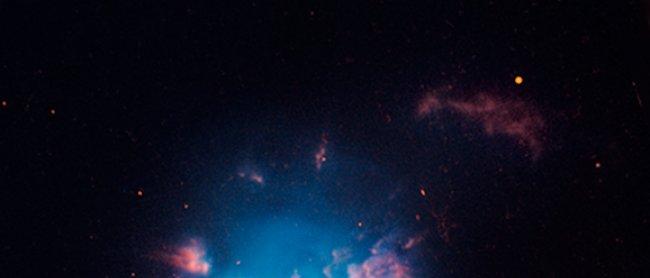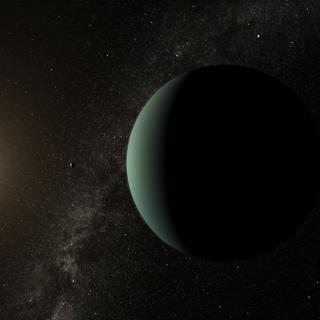An international team of astronomers, led by the Instituto de Astrofísica de Canarias (IAC) and Universidad de La Laguna (ULL) investigator David Jones, have discovered a binary system with an orbital period of just a little over three hours. The discovery, which involved several years of observing campaigns, is not only surprising due to the extremely short orbital period but also in that, due to their close proximity to one another, the system may result in a nova explosion before the short-lived nebula has dissipated. The results of the study were published today in the prestigious scientific journal Monthly Notices of the Royal Astronomical Society (MNRAS).
Planetary nebulae are the glowing shells of gas and dust ejected from Sun-like stars towards the ends of their lives. "In many cases, we see that the ejection is driven by the interaction between the progenitor star and a close companion, and this is leads to the vast array of elaborate shapes and structures we see in the nebulae", explains Jones. The study focused on the planetary nebula M3-1, a firm candidate to have been the product of a binary system due to its spectacular jets, which are typically formed by the interaction of two stars. According to Brent Miszalski, researcher at the SALT telescope in South Africa and co-author of the work, "We knew it had to contain a binary, that's why we decided to study the system to try and understand the relationship between the stars and the nebula they have formed".
The observations quickly confirmed the researchers suspicions. "When we began observing it was immediately clear that it was, indeed, a binary. Moreover, the brightness of the system was changing very quickly and this could mean a rather short orbital period", says Henri Boffin, researcher at the European Southern Observatory (ESO) in Germany. In fact, the study revealed the separation between the stars to be, approximately, 160,000 kilometres, or less than half the distance between the Moon and the Earth.
After various observing campaigns in Chile with ESO's Very Large Telescope (VLT) and New Technology Telescope (NTT), the researchers had enough data to work out the properties of the binary system, like the masses, temperatures and sizes of both stars. "To our surprise, we discovered that the two stars were quite big and that, as they are so close to one another, it is very likely that they will begin to interact again in just another few thousand years perhaps resulting in nova explosion" adds Paulina Sowicka, PhD student at the Nicolas Copernicus Astronomical Centre in Poland.
The result contradicts current theories of binary stellar evolution which predict that, upon forming the planetary nebula, the two stars should take quite a long time before beginning to interact again. By the time they do, the nebula should have dispersed and should no longer be visible. However, a nova explosion in 2007, known as Nova Vul 2007, was found to be inside another planetary nebula, putting into question the models. "In the case of M3-1, we have found a candidate to experience a similar evolution. Given that the stars are almost touching, they shouldn't take too long before interacting again and, perhaps, producing another nova inside a planetary nebula", concludes Jones.
Article: Jones, D. et al. The short orbital period binary star at the heart of the planetary nebula M 3-1. Monthly Notices of the Royal Astronomical Society: Letters, 482, L75, https://doi.org/10.1093/mnrasl/sly142
Contact: David Jones, IAC researcher: djones [at] iac.es (djones[at]iac[dot]es), 922 605 200 ext. 3718
For the media that need it, we have video clips with statements in Spanish by researcher David Jones. Resolution: 1080p. Aspect: 16:9. Format: MP4



